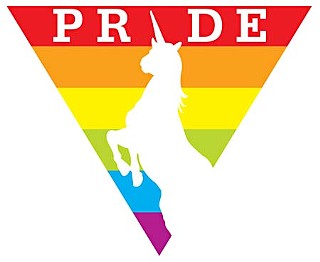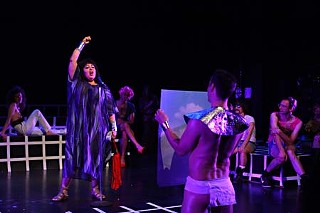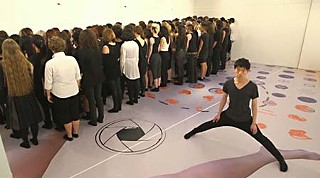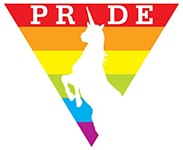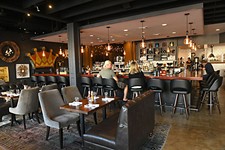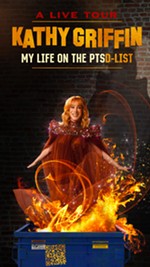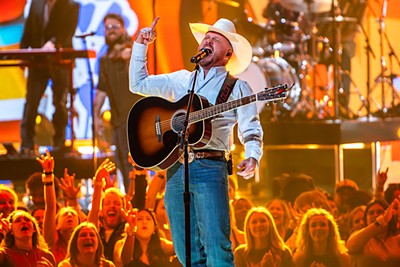Geometry Test
Artist Emily Roysdon queers the white cube
By Brandon Watson, Fri., Sept. 21, 2012
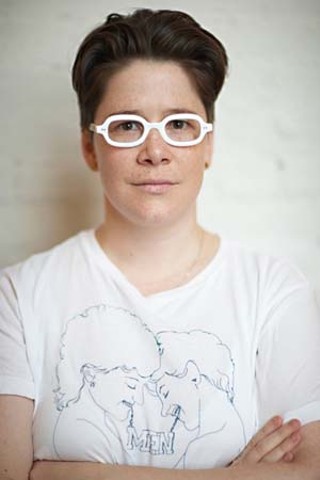
The language we choose for the arts creates strict geometries. We frame oils or display objets in square vitrines. We talk about art in blocked quotes written on rectangular paper; we watch performances in pop-up windows on laptop screens. That rigidity sets expectation. We know the theatre's black box brings us in; we know the gallery's white cube demands distance. Breaking those walls leads to discomfort. But where others would see barriers, artist Emily Roysdon sees opportunity. The acceptance of fluidity informs everything she does – including co-founding influential genderqueer feminist collective LTTR, designing costumes for choreographers Vanessa Anspaugh and Levi Gonzalez, and writing lyrics for MEN and the Knife – but is most arresting boxed within the gallery's walls.
In the context of a gallery, Emily Roysdon's work is disruption. She uses an interdisciplinary approach to explore the slipperiest of art's words: movement. In Roysdon's pieces, movement carries multiple meaning. I Am a Helicopter, Camera, Queen, performed at Tate Modern, takes 105 participants through simple choreography. The live-streamed event moves, literally, but the purposefully selected performers speak to a different kind of movement. Each person in the space identifies as queer and/or feminist, counterprogramming the cis, straight male domination of contemporary art, queering the gallery space shared with Damien Hirst's diamond-encrusted memento mori For the Love of God, perhaps the most phallocentric work of recent art history.
Yet, despite the identity politics threaded in works like I Am a Helicopter, Roysdon shies from labeling herself an activist. "No, I can't, because I have too much respect for people who are," she explains. "It's just not something I can call myself." She pauses to add, "but I'm happy if someone else calls me that."
It's difficult not to affix the activist label to Roysdon. Works like her 2010 Whitney Biennial entry The Piers Untitled takes inspiration from the history of queer political and social activity. Before taking on art, her study focused on the history of political movements. Even her art practice began after reading NEA-challenging artist David Wojnarowicz's politically charged memoir Close to the Knives. Roysdon recalls "[Wojnarowicz] made me feel like I could be an artist ... He opened that door for me," adding, "the thing there was really about connecting with the way that his politics motivated his practice, that he was enraged and productive."
Activism is also upfront in the traveling artist's conceptions of place. In 2011, "A Gay Bar Called Everywhere (With Costumes and No Practice)" used Susan Sontag's work in gay bars to discuss queer life. 2010's "Sense and Sense" was performed on Sergel's Square, the planned square for political protest in Stockholm. She hints that her upcoming installation as a visiting artist at the University of Texas' Visual Arts Center (VAC) trades on politics, too. She laughs, "I could say too much, but instead I'll let you see the show. Austin sort of has a famous queer community. It's on the map. It's been in my imagination as a place to have some interesting conversations."
Unfortunately, Roysdon could not give any further preview of her VAC installation. When asked for more detail, she explained the work was far from completed. A few stolen glances at her prints offered scant clues. She did confide that she was interested in "bringing the black box to the white cube," a test for a contemporary art world that has drawn too many straight lines.
"Pause, Pose, Discompose" will have an opening reception Fri., Sept. 21, 6-8pm, at the Visual Arts Center, 23rd and Trinity. www.emilyroysdon.com, www.utvac.org.





